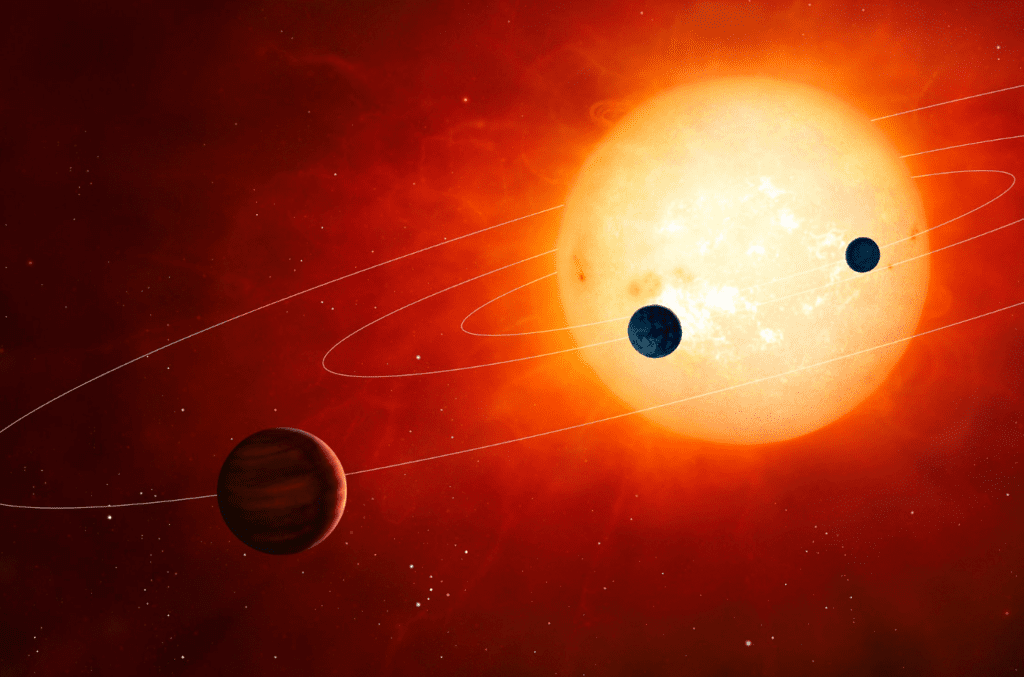An international team of astronomers has announced the discovery of two bodies that are part of the HD 18599 star system. The density of one of them exceeds the density of the Earth, while the other object can be either a brown dwarf or a low-mass star.

HD 18599 is a relatively young orange dwarf. The star is located at a distance of about 1,700 light-years from Earth, its age is estimated at 400 million years.
During the analysis of data collected by the TESS space telescope, astronomers discovered periodic changes in the brightness of HD 18599 caused by the transits of the two companions. In the course of subsequent observations made using HARPS and SPHERE spectrographs installed on the telescopes of the European Southern Observatory, they were able to confirm the existence of these bodies, as well as determine their masses.
The first companion HD 18599 is an exoplanet. Its radius is 2.62, and its mass is 24 times the mass of the Earth. This gives an average density of about 7.4 g/cm3, which is more than the average density of the Earth. The exoplanet makes one orbit its star in 4.14 days, while it moves in a rather elongated orbit.
The orbit of the second body passes at a distance of 3.3 au from the star. Its mass exceeds the mass of Jupiter by 83 times, which places it on the theoretical boundary separating brown dwarfs from low-mass stars. Astronomers plan to continue observations to establish the exact nature of the object and to assess the overall dynamics of this unusual star system.
You can also read about the super-Earth, which has completely lost its atmosphere due to the parent star.
According to https://phys.org
Follow us on Twitter to get the most interesting space news in time
https://twitter.com/ust_magazine

